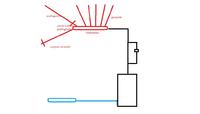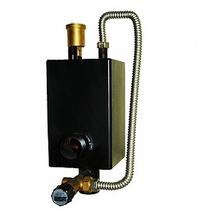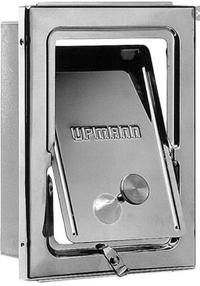Dear forum users. A few days ago I bought a house with a very simple stove - ZEBIEC S1WK10. From the furnace, hot water goes to the pump (there is also a bypass) and then goes to the distributor. The pump is connected to the controller and turns on at a temperature of 35 degrees. Water is pulled from the manifold to the whole house in a pex 15 tube. My problem is the inability to control the temperature. Yesterday late in the evening (around 24.00) (and this was also the case the day before yesterday and the day before) before going to bed, I went down to the boiler room, the temperature on the stove was 43 degrees, I threw 2 scoops, small, maybe more like a spade, my shovel looks like, I closed bake "deaf" and went to sleep. After an hour at home, there was nothing to breathe, 89 degrees on the stove! The fact was that the water was not boiling but it was close. I have a boiler that I will connect (at the moment it is installed only with an electric heater). My idea, if I am wrong, is to install SOMETHING which, at a maximum temperature of 70 degrees Celsius, would open the valve and hot water would flow from the boiler to the sewage system, the boiler would fill with cold water, thus cooling the system. The question of how to do the aforementioned SOMETHING? Maybe there is some other way to cool it down. Help me please because the situation is very unpleasant. I will only mention that at 1 am the temperature was 89 degrees and in the morning at 7 am it was only 23 degrees - all the coal was burnt. If I wanted it to be warm in the morning, I would have to throw in 4 scoops, which would undoubtedly make me "mexico" out of my pex tubes. I would like to be able to "slow down" the temperature at around 70 degrees Celsius because the house has very good thermal insulation and at 70 there is already a sauna ...
Thank you very much for taking the time to read and help if necessary.
Regards
Thank you very much for taking the time to read and help if necessary.
Regards





